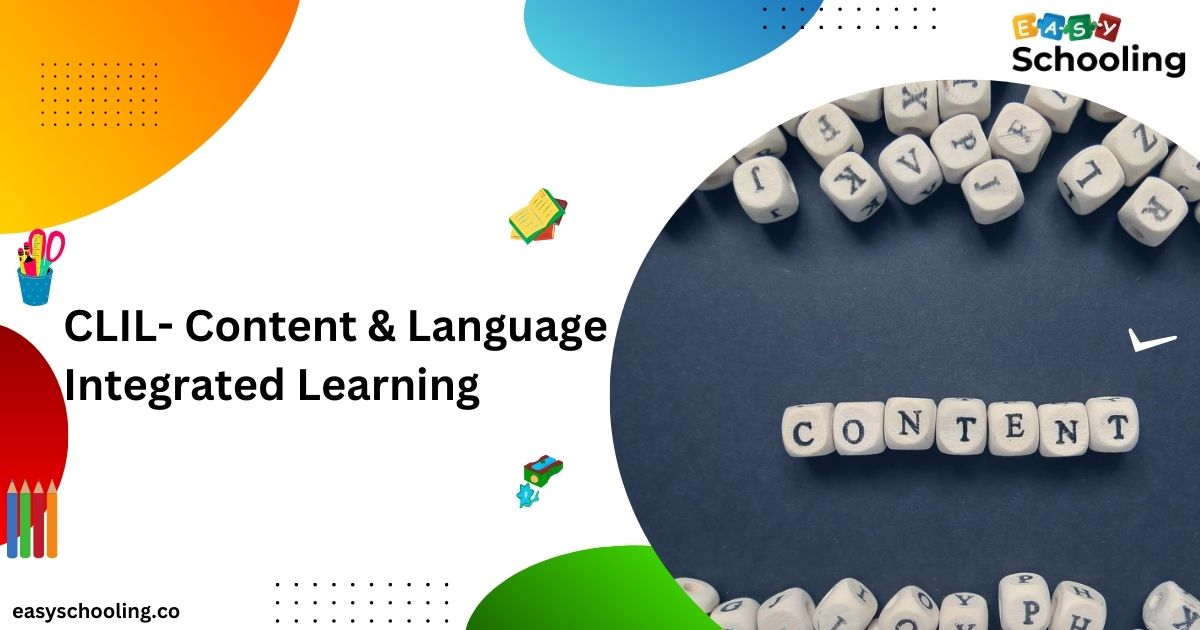Engaging in content and language integrated learning(CLIL) marks a revolutionary shift in instructional delivery. This method is meticulously crafted to empower students, enabling them to concentrate on their specific learning needs while fortifying their capacity to acquire additional skills mandated by the curriculum. Through the utilization of adaptive technology, learners traverse their educational journey at their unique pace, engaging with tailored content personalized expressly for their learning paths.
Content and language integrated learning (CLIL), a pedagogical approach implemented within educational institutions, entails the instruction of various subjects such as English, mathematics, science, and social studies in the target language.
The success of content and language integrated learning lies in its ability to not only instruct students in reading, writing, and listening but also to cultivate proficiency in speaking a foreign language. Exposure to diverse sensory inputs enables learners to broaden their vocabulary horizons significantly. This approach allows students to hone both receptive and productive language skills simultaneously, a process pivotal in fostering fluency.
Why Opt for CLIL?
CLIL stands as an effective conduit bridging the chasm between a student’s native language and the target language. It offers a means to impart novel concepts in alignment with students’ existing knowledge base.
This approach seamlessly intertwines content mastery with language acquisition, fostering the development of essential skills in reading, writing, speaking, listening, and critical thinking through immersive literacy experiences. The curriculum of content and language integrated learning is meticulously designed to equip English learners with the academic language essential for active participation in classroom discussions while enhancing their grasp of subject matter.
At the heart of CLIL lies the principle of elevating oral language involvement. Hence, teaching students how to categorize content into distinct classifications is imperative. Bloom’s taxonomy serves as a valuable tool for achieving this objective. Comprising three primary components—knowledge, skills, and attitudes—the taxonomy hierarchically organizes knowledge levels, with knowledge occupying the highest tier and attitudes, the lowest. Skills encompass four levels, applying to both knowledge and attitudes.
Bloom’s taxonomy presents a hierarchy of cognitive tasks applicable to CLIL, encompassing six major domains: knowledge, comprehension, application, analysis, synthesis, and evaluation. Knowledge encapsulates a comprehensive understanding of a topic without delving into specifics. This understanding leads to comprehension. Once individuals grasp a subject, they can apply this knowledge to problem-solving—an application phase that transitions into analysis. During analysis, students deconstruct their knowledge into distinct parts, synthesizing their insights to generate new knowledge or ideas.
CLIL stands as an effective means to enhance classroom engagement and foster multilingual fluency among students. While it may not suit every class, it stands as a valuable asset for educators seeking innovative teaching methodologies.
See More: How to Set Up a Virtual Classroom
FAQs about CLIL- Content and Language Integrated Learning
What is the primary goal of CLIL?
The primary goal of CLIL is to seamlessly integrate language learning with subject content, promoting linguistic and cognitive development in students.
How does CLIL benefit students?
CLIL benefits students by enhancing language proficiency, broadening academic horizons, and facilitating a deeper understanding of subject-specific concepts.
Is CLIL suitable for all academic levels?
Yes, CLIL can be adapted and implemented across different academic levels, catering to diverse student needs and enhancing overall learning experiences.
How can educators implement CLIL effectively?
Educators can implement CLIL effectively by integrating language and subject matter, providing necessary support, and fostering an inclusive learning environment.
What are the challenges associated with CLIL?
Challenges in CLIL include language barriers, ensuring content understanding, and the need for specialized teacher training to execute CLIL methodologies successfully.
How can language barriers in CLIL be addressed?
Addressing language barriers in CLIL involves employing scaffolding techniques, providing language support, and creating an inclusive learning atmosphere.
Conclusion
CLIL represents a dynamic approach to education that intertwines language learning with subject content, offering a multifaceted learning experience. By emphasizing integration and immersion, CLIL empowers students to become proficient in both language and academic disciplines.
EasySchooling presents an advanced integrated school platform tailored for the demands of the 21st century. Consolidating the most effective facets of teaching, learning, and management within a singular interface, our platform stands at the forefront. For more insights into our features such as the performance management system, visit our website! Explore our array of offerings, including the LMS portal.
